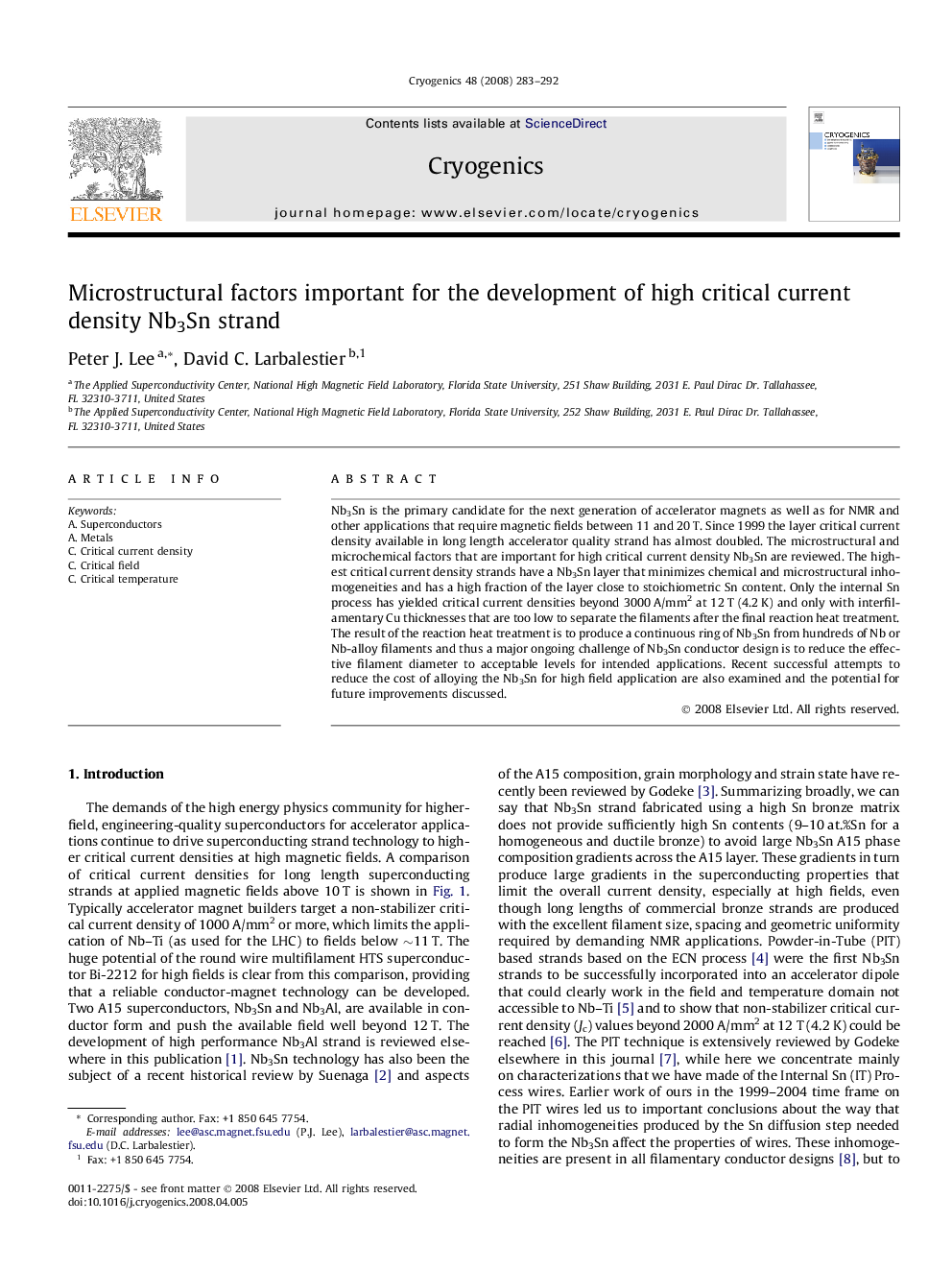| Article ID | Journal | Published Year | Pages | File Type |
|---|---|---|---|---|
| 1508206 | Cryogenics | 2008 | 10 Pages |
Nb3Sn is the primary candidate for the next generation of accelerator magnets as well as for NMR and other applications that require magnetic fields between 11 and 20 T. Since 1999 the layer critical current density available in long length accelerator quality strand has almost doubled. The microstructural and microchemical factors that are important for high critical current density Nb3Sn are reviewed. The highest critical current density strands have a Nb3Sn layer that minimizes chemical and microstructural inhomogeneities and has a high fraction of the layer close to stoichiometric Sn content. Only the internal Sn process has yielded critical current densities beyond 3000 A/mm2 at 12 T (4.2 K) and only with interfilamentary Cu thicknesses that are too low to separate the filaments after the final reaction heat treatment. The result of the reaction heat treatment is to produce a continuous ring of Nb3Sn from hundreds of Nb or Nb-alloy filaments and thus a major ongoing challenge of Nb3Sn conductor design is to reduce the effective filament diameter to acceptable levels for intended applications. Recent successful attempts to reduce the cost of alloying the Nb3Sn for high field application are also examined and the potential for future improvements discussed.
